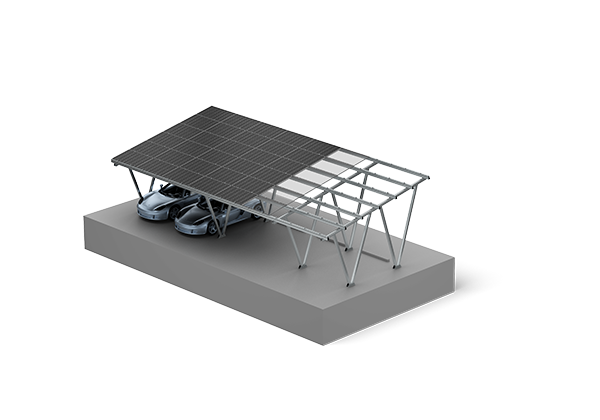Cost Comparison: Solar Carports vs. Traditional Solar Installations
August 10, 2025
As renewable energy continues to reshape the landscape of energy consumption, the choice between solar carports and traditional solar installations has become increasingly relevant. At Antaisolar, we aim to provide a comprehensive analysis of the cost implications associated with residential solar carport solutions versus conventional solar panel systems. This article will explore initial investments, ongoing costs, and overall value to help homeowners make informed decisions.

When considering the initial investment, residential solar carports typically require a higher upfront cost compared to traditional solar installations. Solar carports not only include the price of solar panels but also the structural components necessary to support the system. This infrastructure can add to the overall expense. However, it is essential to factor in the dual functionality of solar carports, which provide both energy production and vehicle protection.
On the other hand, traditional solar installations generally involve lower initial costs since they do not require additional structural support. Homeowners can install solar panels directly on rooftops, which may simplify the installation process and reduce labor costs. However, the choice of installation should also consider long-term benefits, including energy savings and potential incentives.
While the initial investment is crucial, long-term maintenance and operational costs play a significant role in the overall cost comparison between residential solar carports and traditional solar installations. Solar carports tend to require more maintenance due to their structural components, which may need periodic inspections to ensure stability and safety. However, this maintenance can be minimal compared to the benefits provided.
In contrast, traditional solar installations may face issues such as roof damage or leaks, which can lead to additional repair costs over time. Homeowners should weigh these potential long-term expenses when evaluating the overall cost-effectiveness of each option.
Both residential solar carports and traditional solar installations offer value beyond mere energy savings. Solar carports can enhance property value by providing a covered parking solution, which is particularly attractive in areas with extreme weather conditions. Additionally, homeowners may be eligible for various incentives, including tax credits and rebates, which can offset the overall costs of either installation.
In terms of energy production, both systems can yield similar returns, depending on location and system design. However, the added functionality of residential solar carports may provide a more compelling case for homeowners seeking to maximize both energy savings and property utility.
In conclusion, the cost comparison between residential solar carports and traditional solar installations is multifaceted. At Antaisolar, we recognize the importance of considering both immediate costs and long-term benefits. Our W Shape solutions offer a cost-effective option with strong structural integrity and high load-bearing capacity, ensuring a flexible and efficient installation that meets the diverse needs of homeowners.

Initial Investment and Installation Costs
When considering the initial investment, residential solar carports typically require a higher upfront cost compared to traditional solar installations. Solar carports not only include the price of solar panels but also the structural components necessary to support the system. This infrastructure can add to the overall expense. However, it is essential to factor in the dual functionality of solar carports, which provide both energy production and vehicle protection.
On the other hand, traditional solar installations generally involve lower initial costs since they do not require additional structural support. Homeowners can install solar panels directly on rooftops, which may simplify the installation process and reduce labor costs. However, the choice of installation should also consider long-term benefits, including energy savings and potential incentives.
Long-Term Maintenance and Operational Costs
While the initial investment is crucial, long-term maintenance and operational costs play a significant role in the overall cost comparison between residential solar carports and traditional solar installations. Solar carports tend to require more maintenance due to their structural components, which may need periodic inspections to ensure stability and safety. However, this maintenance can be minimal compared to the benefits provided.
In contrast, traditional solar installations may face issues such as roof damage or leaks, which can lead to additional repair costs over time. Homeowners should weigh these potential long-term expenses when evaluating the overall cost-effectiveness of each option.
Value Addition and Incentives
Both residential solar carports and traditional solar installations offer value beyond mere energy savings. Solar carports can enhance property value by providing a covered parking solution, which is particularly attractive in areas with extreme weather conditions. Additionally, homeowners may be eligible for various incentives, including tax credits and rebates, which can offset the overall costs of either installation.
In terms of energy production, both systems can yield similar returns, depending on location and system design. However, the added functionality of residential solar carports may provide a more compelling case for homeowners seeking to maximize both energy savings and property utility.
In conclusion, the cost comparison between residential solar carports and traditional solar installations is multifaceted. At Antaisolar, we recognize the importance of considering both immediate costs and long-term benefits. Our W Shape solutions offer a cost-effective option with strong structural integrity and high load-bearing capacity, ensuring a flexible and efficient installation that meets the diverse needs of homeowners.
end
